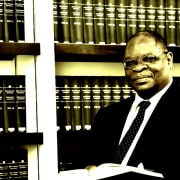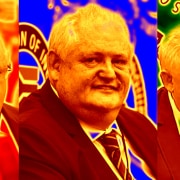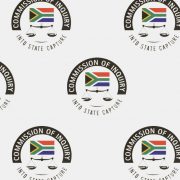|
Getting your Trinity Audio player ready...
|
By Kyle Zeeman
First published on TimesLive
As South Africans get set for the fifth instalment of the state capture report, here is a reminder of what was mentioned, and those implicated, in the first four volumes.
The fifth and final part of the state capture report is due to be handed over to the presidency on Wednesday.
Commission chairperson chief justice Raymond Zondo presented the first part of the report to President Cyril Ramaphosa at the Union Buildings in January. The fourth part was handed over in April.
The commission was expected to release the final instalment of the report then, but the Pretoria high court granted a six-week extension for the report, to June 15.
The report has so far implicated dozens of high-profile businesspeople, companies, SOEs and politicians.
Here’s a recap of what the previous four volumes contained and some of the individuals implicated:
PART 1
Volume 1 was released on 5 January. It looked at South African Airways (SAA) and related companies, the Gupta-owned The New Age newspaper, and the South African Revenue Service (Sars).
Former president Jacob Zuma was implicated for the first time and would feature prominently in reports that followed. Several high-profile allies of Zuma, including former SAA board chairperson Dudu Myeni and ex Government Communication and Information System (GCIS) CEO Mzwanele Manyi, were named.
Zuma and former Sars boss Tom Moyane were found to have played critical roles in collapsing the institution. Moyane was allegedly informed in advance of his appointment as its head.
Myeni and former SAA head of technical operations Yakhe Kwinana were found to have run the airline into the ground, in part with fear and intimidation. It found the lack of accountability and transparency at SAA and SAA Technical enabled state capture and corruption.
Manyi was accused of enabling state capture during his 18-month tenure as CEO at state communications entity GCIS. Under his leadership, the Gupta-owned New Age newspaper allegedly received millions of rand in advertising and sponsorships from the government.
Read Corruption Watch’s summaries of the first report
PART 2
Volume 2 was released a month later on 1 February, and dealt with evidence related to corruption allegations at Transnet and Denel.
The report implicated former public enterprise ministers Malusi Gigaba and Lynne Brown as well as former Transnet group CEO Brian Molefe. It found Gigaba lied about not knowing the Guptas, claiming he had known the controversial family for years and used his position to appoint their allies in strategic positions at state-owned companies.
It alleged Brown also lied when she denied knowing the Guptas, saying evidence before it proved she helped them loot state resources at Denel.
Read Corruption Watch’s summaries of the second report
PART 3
Volume 3, released on 1 March, was dedicated to corruption allegations at Bosasa, later renamed African Global Operations.
The company’s executives were found to have used their connections with politicians to score lucrative government contracts for years.
Mineral resources and energy minister Gwede Mantashe, former minister Nomvula Mokonyane and Zuma were among the prominent names implicated in the report.
Former company executive Angelo Agrizzi alleged Mokonyane received annual Christmas groceries from Bosasa. He also claimed to be responsible for setting up Zuma’s campaign for the national conference in Mangaung in 2012, the ANC’s national elections in 2014 and the local government elections in 2016.
The report said Mantashe enjoyed security upgrades and renovations at his homes in Boksburg, Cala and Kowa in the Eastern Cape, all from Bosasa. Among the recommendations was that Mantashe be investigated in terms of the Prevention and Combating of Corrupt Activities Act, saying he was likely corrupt in his dealings with Bosasa during his tenure as the ANC secretary-general.
Read Corruption Watch’s summaries of the third report
PART 4
The fourth instalment, released on 29 April, dealt with, among other things, the capture of Eskom and the Free State’s controversial R1-billion housing project.
Zuma, the Guptas and the ANC featured prominently in the report, with Zondo saying the ruling party should be ashamed of itself for allowing Zuma and the Gupta family to run amok.
It claimed Zuma would have done “anything that the Guptas wanted him to do for them”, including getting rid of competent ministers at the family’s request.
Brown was again implicated, named as a key figures in enabling the capture of Eskom by the Gupta family.
It also called the Free State provincial government’s handling of the housing project a “dismal failure” and said it was a debacle.
The report said Zuma’s decision to replace Ngoako Ramatlhodi with Mosebenzi Zwane as mineral resources minister was probably influenced by the Guptas. It slammed Zwane as an incompetent, brazen and a bad leader who tried to pressure banks to reopen Gupta accounts.
Among its recommendations was for criminal charges to be instituted against members of the Gupta family, and the removal of Zizi Kodwa from the deputy state security minister portfolio.
The report also called on the government to seek legal advice on how to recover the R255-million wasted on the Free State housing project.






